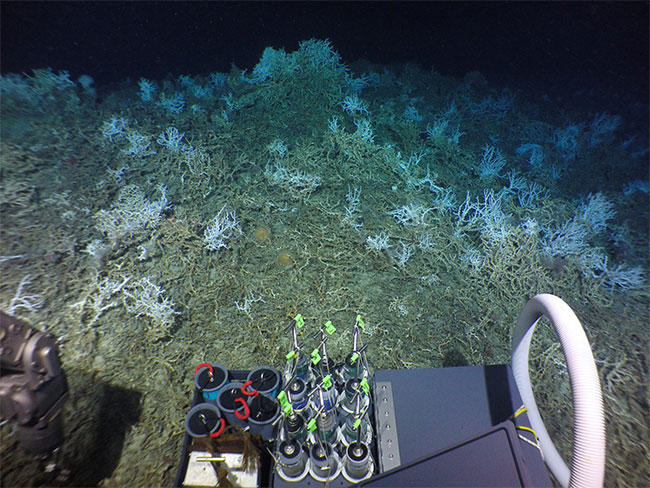Scientists have found a giant coral reef hidden in the ocean floor
Living in temperatures of about 8 degrees Celsius - quite cold compared to the inherent habitat, but these coral reefs grow extremely strongly.
In late September, scientists from NOAA (American National Oceanic and Atmospheric Administration) conducted an expedition called Deep Search 2018 . And thanks to this trip, they discovered a giant coral reef, stretching over 85 miles (136km), deep in the South East Sea.

Coral reefs are located off the coast of Georgia and South Carolina.
The expedition takes place from August 2017 to September 2018. The purpose of the trip is to help scientists get more important information about the lesser known ecological areas beyond the East Coast of the United States. Since then, they will take measures to protect the ecological diversity of these areas.
In order to gather the environmental information of the deep sea area, scientists were forced to seek "help" from an unmanned explorer ship called Alvin.
"The good news is that we have found a pristine coral reef right in the waters of our country," said study author Erik Cordes, the study author.

Alvin - unmanned explorer ship.
Coral reefs are located off the coast of Georgia and South Carolina, 257km east of Charleston. Specifically, the image that the Alvin machine recorded showed the moments of coral reefs growing strongly on a large mound, in the extreme temperature environment of only about 8 degrees Celsius.
According to scientists, the area has many special corals such as coral Lophelia, Enallopsammia, Madrepora and Octocorals and even unknown corals.
It is known that corals play an important role in the ecosystem of their area and are home to many other organisms such as fish, plankton, .

This area is the "dead land" of previous corals.
Ordinary corals use nutrients from symbiotic single-celled algae. But the Charleston area corals are more special, they use tentacles to catch fleets for dinner.
In particular, this area is the "dead land" of previous corals. The co-author of the study, Caitlin Adams, said: "This soil was originally a collection of corals of Lophelia. However, over time, young coral Lophelia gradually grew. up from the old "skeleton", which formed strong and fast-growing coral reef structures that spread far away on the east coast of the United States. "
From the collected coral samples, researchers can find out more about coral communities deep in the ocean. Hopefully, in the near future, we will get more important information about this particular coral reef.
- The discovery of a giant coral reef measuring 56,000 km2 off Brazil
- Map the global coral
- 50% of corals worldwide have disappeared
- The 10 most shocking mysteries of the ocean floor
- Coral reefs will die if seawater acidity does not decrease
- The world's largest coral reef is dying
- Australia implements a system to protect coral reefs
- Strange sea creatures in the coral reef
- The world's largest coral reefs face the risk of permanent wiping
- UNESCO warned of the Great Barrier Reef
- Explore the ocean
- Securing the coral reef ecosystem in Phu Quoc
 Surprised: Fish that live in the dark ocean still see colors
Surprised: Fish that live in the dark ocean still see colors Japan suddenly caught the creature that caused the earthquake in the legend
Japan suddenly caught the creature that caused the earthquake in the legend A series of gray whale carcasses washed ashore on California's coast
A series of gray whale carcasses washed ashore on California's coast Compare the size of shark species in the world
Compare the size of shark species in the world